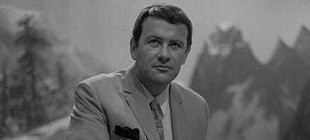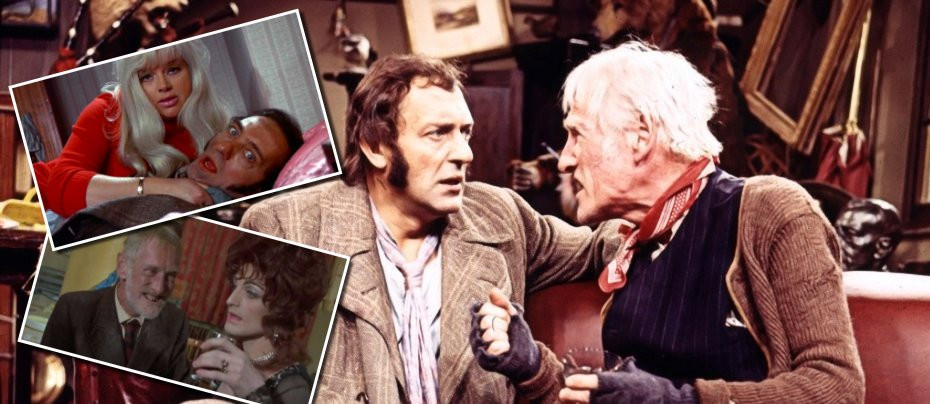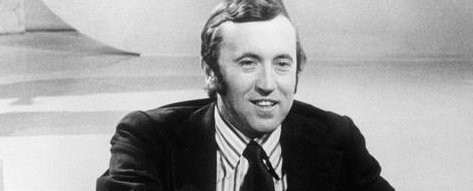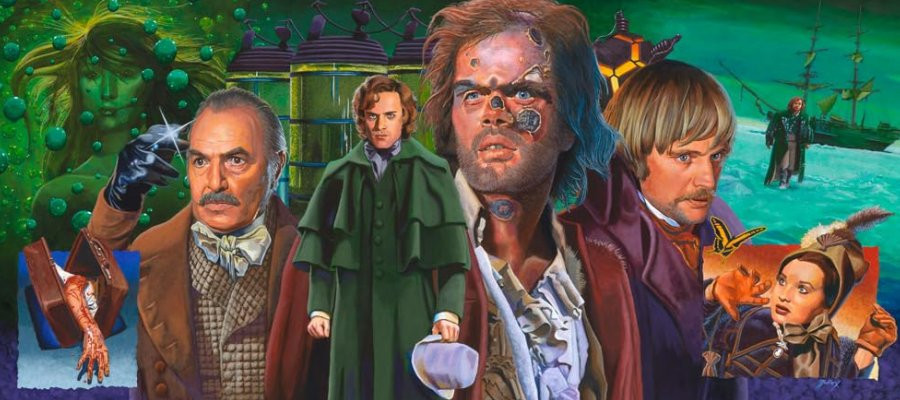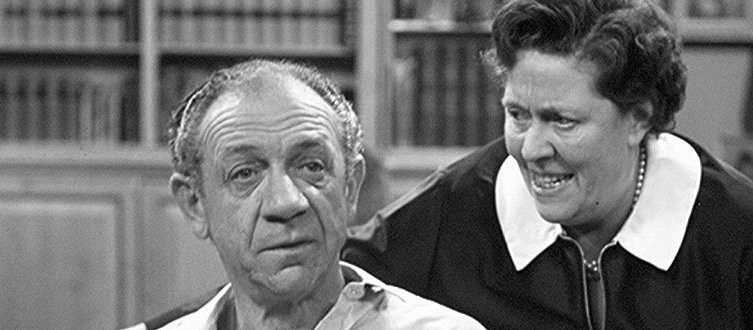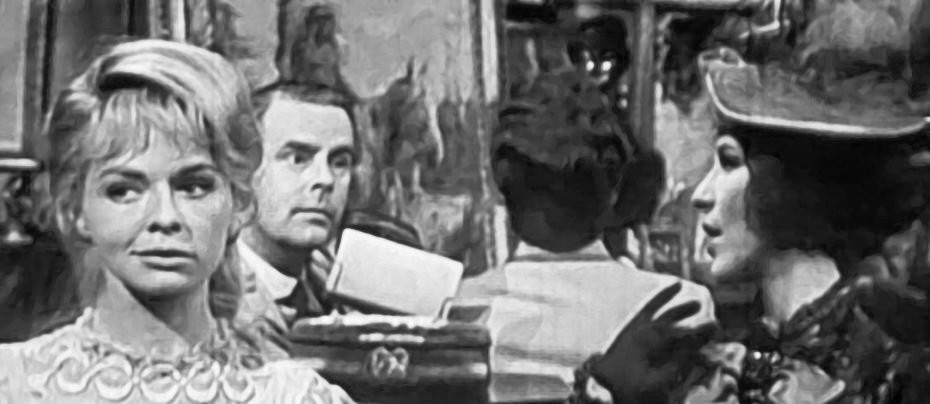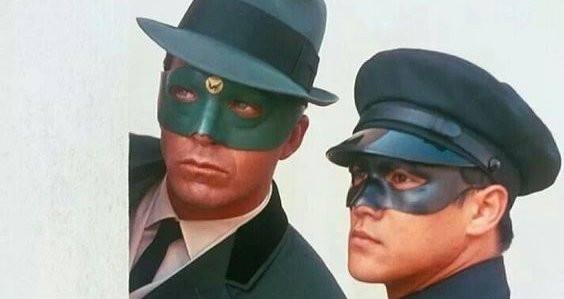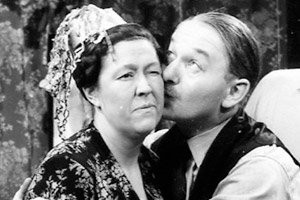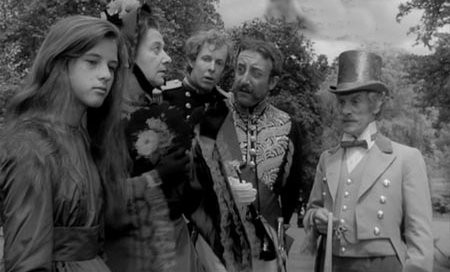
Alice In Wonderland
1966 - United KingdomUnimpressed with Disney's 1951 animated version of Lewis Carroll's (Charles Lutwidge Dodgson) Alice in Wonderland, Jonathan Miller was keen to develop a new version which would bring to the fore undertones of the story that had been glossed over in the often 'traditional' presentation of this classic children's tale. The production was, however, fraught with difficulties, and the eventual presentation met with no more than a lukewarm reception from both critics and viewers.
"I was interested in what dreams were about. That's what Lewis Carroll was interested in," explained Miller reflecting on his production some years later. "There were certain things which intrigued me about his writing. His Victorianism. The melancholy of Growing old and the sadness of losing childhood, which is what the whole book's about. It isn't just a charming fairy story which entertains middle-class children." Alongside Peter Cook, Dudley Moore and Alan Bennett, Miller had changed the face of comedy in the UK and helped pave the way for the so-called 'satire boom' of the 1960s. Miller, who had originally been studying medicine at Cambridge, had always intended to return to doctoring but soon became sidetracked by, firstly, theatre work and secondly, television. As soon as the revue Beyond the Fringe opened at the Fortune Theatre in May 1961, a new era of British comedy began that would go on to influence not only theatre, but also radio, television and the cinema. And that era was largely dominated by writers and performers who came into showbusiness almost by accident.
When it came to making Alice in Wonderland, Miller himself was largely influenced by the 19th century poet William Wordsworth's ode Intimations of Immortality from Recollections of Early Childhood (in fact, this was quoted at the start and end of Miller's production). Miller also decided to dispense with the traditional costumes of previous versions based on the famous illustrations of John Tenniel, preferring the appearance of the formal and stiff Victorian fashions that Dodgson would have been familiar with when he wrote his story. Miller also insisted that his film should capture the Victorian atmosphere.
The first person that Miller approached to play a part in his film was Peter Sellers. The former 'Goon' was, by this time, much in demand but agreed to play the King of Hearts as long as the filming of his role didn't take more than three days. Alison Leggatt would play the Queen and Peggy Mount the Duchess. Miller's former 'Fringe' colleagues Peter Cook and Dudley Moore would play the Mad Hatter and the Dormouse, respectively. The impressive cast list continued with Sir John Gielgud as the Gryphon and Frankie Howerd as the Mock Turtle. Parts were also offered to Robert Morley, Spike Milligan and Kenneth Williams (none of them appeared). Miller also approached Noel Coward to play the Caterpiller and Eric Sykes was offered the March Hare. Ian Carmichael agreed to play the Knave of Hearts, Leo McKern the Dodo and Patricia Routledge the Peppercook (Only McKern would make the final film). The BBC had only allocated a small budget (£32,000) for the production and each actor was to earn £500.00 for their work. For the role of Alice, Miller wanted a complete unknown. In order to find a 'non-actress' the BBC placed an advertisement in the March 5, 1966 edition of The Sunday Times asking for an untrained 10-year old girl. 600 'Alice's' applied. In the end the role went to 13-year old Anne-Marie Mallik.
Shooting commenced on June 22 but by then there were a number of cast changes. Dudley Moore now proved to be unavailable and was replaced by Wilfred Lawson. Michael Gough replaced Eric Sykes and Wilfrid Brambell was contracted as the White Rabbit. Noel Coward dropped out and Miller tried to get James Mason as his replacement. When he couldn't get him, Miller managed to contract Sir Michael Redgrave. Peggy Mount was now unavailable and her role now went to Leo McKern! Sir John Gielgud now played the Mock Turtle after Frankie Howerd dropped out and his part (the Gryphon) went to Malcolm Muggeridge a British journalist, author, and media personality who, in his later years, was a Catholic convert and writer.
Shooting commenced on 35mm black and white film and apparently Miller, who had not prepared a definite script, encouraged improvisation from his actors. When the US TV Networks, that the BBC had been in negotiation with to sell the finished production, discovered that the film was not in colour - their interest distinctly cooled. The film was scheduled for Wednesday 28th December but following an advanced press preview at the Columbia Theatre in Shaftsbury Avenue, London, many papers proclaimed that Miller's version was definitely not for kids. One newspaper wrote that children would be bored "and the adults may well be, too." In the end, 12 million viewers tuned into BBC1 but reaction to the film was decidedly tepid. The BBC received over 100 phone calls of complaint with one caller describing the film as "an insult to Lewis Carroll." The film was repeated the following April (1967) but was not seen again until 1986 during a season of programming to celebrate BBC TV's 50th anniversary. Johnathan Millers Alice in Wonderland was also released on video and DVD in 2003 by the BFI.
Peter Sellers did return to the role and this time Spike Milligan and Dudley Moore had no trouble making it - in a 1972 musical version starring Fiona Fullerton as Alice. The film won two BAFTA Awards.
Seen this show? How do you rate it?
Seen this show? How do you rate it?
Published on November 27th, 2018. Written by Laurence Marcus for Television Heaven.


